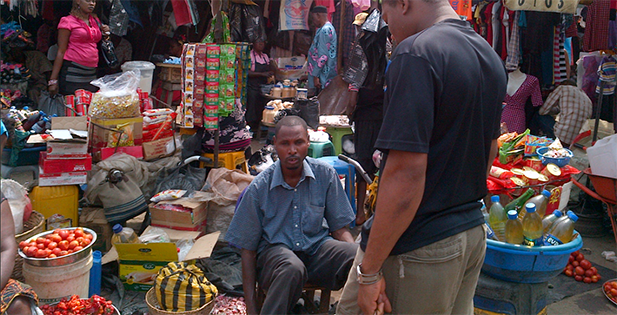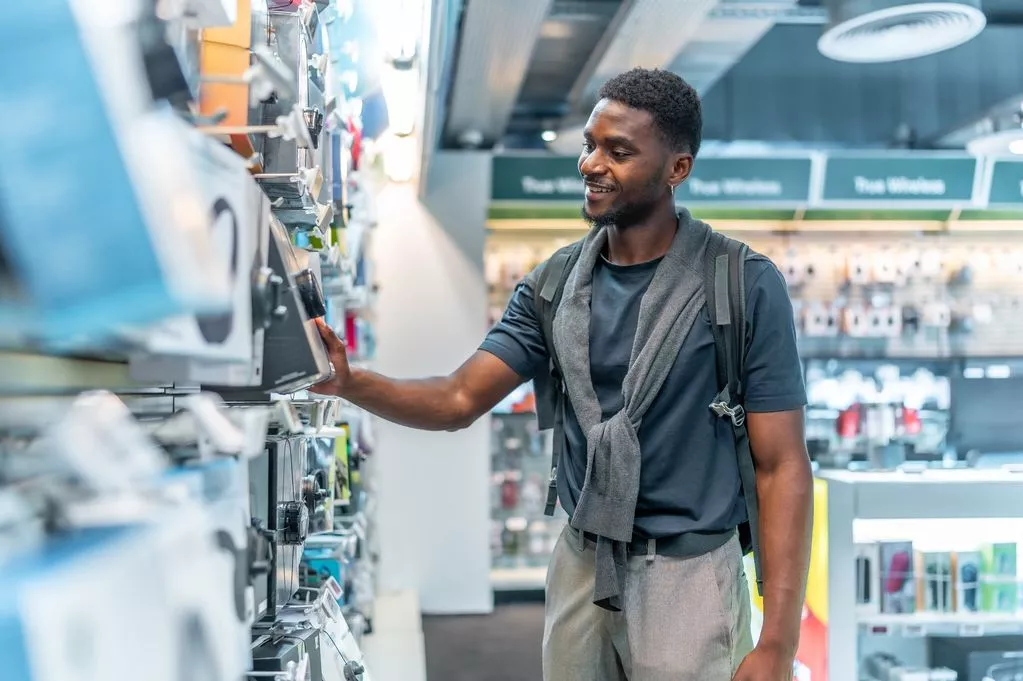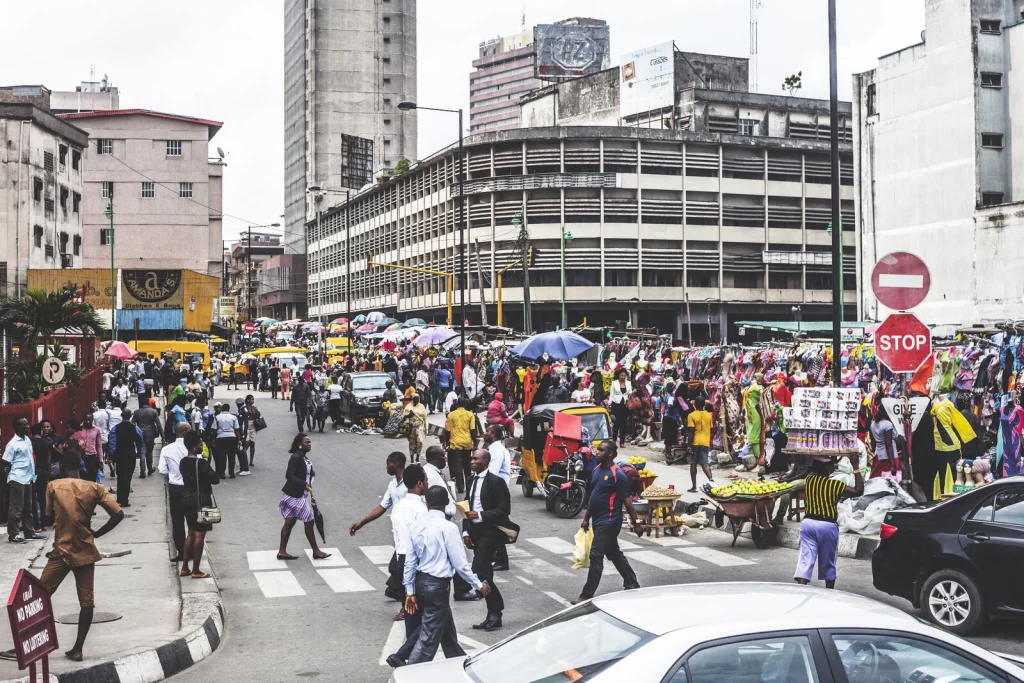Adam loves wristwatches and could not resist the temptation of buying a new wristwatch he saw with a street seller while driving in traffic in Lagos, Nigeria. Adam immediately removed his headphones and asked: how much is this, while pointing to one wristwatch. The vendor responded, Oga, I will give you for N5,000. Hearing this, Adam started bargaining. For about 20 minutes, the negotiation went back and forth between the duo while the bus moved into traffic. At the end, Adam purchased the item for N2,500. It excited Adam not only because he could purchase the item half of its original price, but because he had a fun-filled interaction with the seller. All over West Africa, bargaining is so woven into the culture and fabric of shoppers purchasing in mostly open-air markets it is more popular than football.
Interestingly, the situation is similar among Egyptian shoppers. Buyers bargain when they intend to buy and have a price in mind. They then ask the seller to offer a price while they offer half the recommended price. This process continues until they arrive at an adjusted price. Haggling is also a critical part of Kenyan consumer behavior. Price haggling occurs across all transaction types except in modern retail outlets.
Shoppers in Africa don’t just bargain prices but also haggle discounts, quantities, product and service bundles, service contract agreements, rebates and incentives. Bargaining in business to business (B2B) transactions is even stronger than in business to consumers (B2C) transactions. Shoppers bargain hotel room rates, taxi rides, artifacts and prices for outfits they want made. In summary, shoppers on the continent don’t negotiate prices just because they cannot afford them, but because they usually have a sense of joy and accomplishment when they can get products at reduced prices because of their haggling skills. However, modern brick and mortar outlets and online shops fix prices.
Bargain satisfaction is the gratifying feeling buyers experience after convincing sellers to sell something for less money. Despite the popularity of shopper bargaining, marketers on the continent do not consider bargain satisfaction when evaluating the overall satisfaction of customers.
It is time to rethink customer satisfaction to capture today’s reality. Marketers, salespeople and retailers have successfully used the customer satisfaction framework to manage customer and brand engagement across the world. But in today’s increasingly digital world, bargain satisfaction is a major but often neglected driver of satisfaction. There are three major reasons marketers should care about customer bargain satisfaction.

Image source: Howng
Increases Shopper Patronage: Mindless of the shopping location, whether it’s a brick and mortar outlet or a virtual platform, shoppers are more likely to patronize outlets that offer bargaining opportunities than outlets that do not.
Shows Customer Empathy: Shoppers care more about brands, marketers and retailers that show empathy. Shoppers are hungry for retailers and salespeople that offer them the opportunity to negotiate their price, brand and purchase preferences.
Builds Relational Selling Skills: Bargain interactions offer salespeople the opportunity to move beyond a transactional selling approach to a more relational approach
Marketers need to reinterpret customer satisfaction to capture the reality of bargaining that takes place in many parts of the world, especially in Africa. As the chart below shows, this framework highlights the need for marketers in Africa to shift the emphasis from price points to price structures, paths to purchase to paths to purchase negotiation, products to co-created offerings, brand promotions to creative storytelling-SNOC, for short. The SNOC framework can help marketers in four ways. See Framework below.
| Instead of Price POINTS | Focus on Price STRUCTURES
Define prices by ranges, structures and boundaries that make components transparent to buyers |
| Instead of PURCHASE Paths | Focus on NEGOTATION Paths
Develop a set of criteria for evaluating the negotiation triggers during a purchase situation |
| Instead of PRODUCTS | Focus on Co-created OFFERINGS
Present products and services as bundles of offerings co-created with the buyer’s intervention |
| Instead of Brand PROMOTION, | Focus on CREATIVE STORY TELLING
Situate campaigns around credible and interesting stories that reflect shoppers ongoing conversations with brands |
First, customers want marketers and salespeople to be more transparent about the components and boundaries of their prices. Moving from sharing price points to sharing price structures would allow marketers to communicate that they are ready to entertain bargain situations. This is something that e-commerce platforms can easily do by indicating price ranges and the components of those ranges.
Second, lots of marketers fixate on understanding customer paths to purchase. Yet the turbulent nature of economies and the global realities of the pandemic have shown that purchase paths are not predictable. Thinking about a customer’s path to negotiation can help marketers to unravel the socio-cultural, psychological and economic considerations that make customers bargain. This understanding will help to develop more flexible path to purchase models that weave in negotiation considerations.
Third, customers are more likely to embrace brands that offer the opportunity to co-create bundles of products and service offering. Bundles encourage conversations about brands and invite bargain conversations.
Finally, brands that do not use story telling to emphasize their messages risk extinction. Marketers can use the SNOC framework to think differently about the purpose, channels and content of their branding campaigns. The more conversational the brand is, the better. Bargain interactions about the brand offer opportunities to extend the conversation.
The SNOC framework is the core of a novel approach to customer satisfaction in Africa and marketers who choose to ignore it miss a strategic opportunity.
Sources:
1 https://circumspecte.com/2017/03/bargaining-shopping-in-west-africa/
2 https://travel2egypt.org/bargaining-in-egypt-2/
3 https://www.money254.co.ke/post/haggling-how-to-bargain-for-the-best-deals
1 The name for boss is Nigerian pigeon English








2 Comments
This is really informative 👏🏾
Interesting. Personally, I’ve never enjoyed haggling, I find it tedious and a time waster, especially on a B2B basis. Sometimes you are not necessarily getting a better deal, the sellers first offer is often something ridiculously high because they anticipate the haggle.
Whenever I have the option to buy from a wholesaler or retailer known for good bargains, I take it and I have often found that the price in the open air markets are either higher or similar.
Its an experience I’ve had to get used to over time.